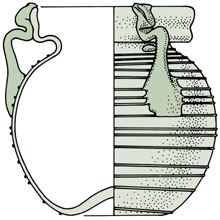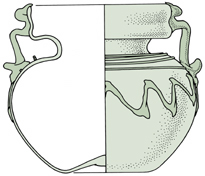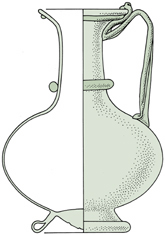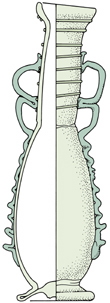Early Byzantine Motifs

Bowl-shaped lamp
Light green body and threads
Ht., 8.9 cm
Late 4th century A.D.
Inv. 86-35-108
The numerous glassworking innovations of the 4th century A.D., such as Italian gold-glass roundels with their strong ecclesiastic, and web-caged vessels of the Rhineland, all stand out because of their aesthetic freshness. At the same time, however, something intriguing was happening to the decoration of glassware in the Eastern provinces. For centuries past, Roman glassworkers instinctively had used loose windings of hot glass thread to give glassware a livelier character. Now they used the threads in other ways, to create four new design motifs that eventually would dominate the decoration of every kind of domestic vessel.
If there was any regionality in the original use of any of these motifs, it was soon to be blurred out by the movement of craftsmen which occurred almost as easily as that of glassware itself along the major roads and caravan routes of the East. By the mid 5th century A.D., the pairing up of motifs was becoming increasingly common and, along the way, a rather bland color palette of green-on-green gave way to a more imaginative use of dark blues greens, and opaque powder blue in the meanders and threads. The bodies of these vessels now ranged in color from colorless to amber.
The tightly wound spiral was the most enduring motif used in eastern Mediterranean glassworking: Islamic examples are known from as late as the 12th century A.D.

Tight spiral
Inv. MS 4942

Meander
Inv. MS 4939

Thick threads
Inv. MS 5125

Pinched ribbing
Inv. MS 5581
